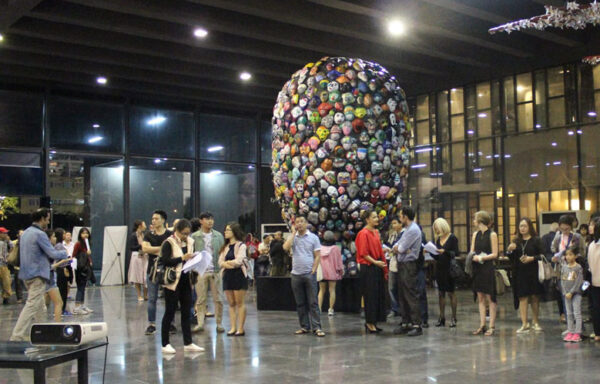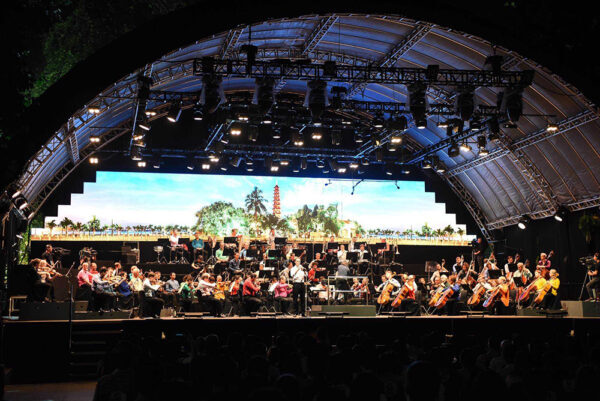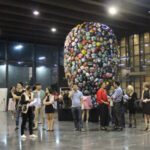Recent efforts show that Hanoi city is gradually shaping the development to position the Creative City brand. It also means that Hanoi city will become an open space for creative industries, with the diverse development of physical creative hubs and also in cyberspace.

Hanoi city will become an open space for creative industries. Photo: Internet.
According to the British Council’s most recent study of creative hubs, Hanoi city is home to the largest number of creative hubs in Vietnam. That clearly shows the creative energy as well as the natural leading position of Hanoi city in the trend of developing creative hubs. It is also because of the benefits that creative hubs bring such as contributing to improving the face of the city, building a local brand; at the same time, it also creates new jobs, inspires creativity and connections, as well as creates open access to knowledge and skills, access to politics and policy, and help make personal lives better.
However, according to a survey by the British Council, the creative hubs are mainly still small projects, built with the passion and limited investment of a few individuals working in the art field. The sustainability of these creative hubs is not high, mainly based on the limited funding sources of international organizations or individuals, depending on the rented land area, and lack of stability. In particular, due to the improvisational and voluntary nature, most creative hubs in Vietnam in general and in Hanoi city in particular, are not managed professionally, in which outstanding issues related to the business model, finance, branding, marketing, human resources, etc.
Meanwhile, according to Mr. Le Quoc Vinh – Chairman of Le Group of Companies, Chairman of the Creative Entrepreneurs Club (VCE Club), the formation of creative hubs is a prerequisite for establishing the image of a creative city. These creative hubs can present themselves as a complex of creative businesses (like Miami Design District, Florida, USA or Hanoi Creative City), a creative display area (like Dubai). Creative Hub or Walking Street around Hoan Kiem Lake), or “markets” to trade and exchange creative goods (like Monmartre hill in Paris, France). “We need to encourage the development of independent creative hubs, which are being organized and operated in the capital,” emphasized Mr. Vinh.
Creative hubs in Hanoi city are currently focusing on the following areas: Co-working spaces, mainly attracting the fields of design, software, media, and advertising; art support spaces; specialized creative hubs. In addition, there are a number of other creative hubs, which exist only in the form of groups of individuals who are doing in arts, not stable, often built according to the creative needs of one or a group of authors in an irregular and movable location.
Except for co-working spaces, which are often well-invested, backed by entrepreneurs, and funded by financial funds, most other creative hubs operate thanks to the enthusiasm of founders and their associates. Most of them do not have the funds to invest in brand building, marketing and communication activities, so only people in the profession are interested and participate in their events.
Thus, in addition to nurturing and developing single creative hubs, or group alliances, a creative city itself must constantly and often have events that attract the public and profession. These events are calculated, in line with local specific industry development goals, creating opportunities for businesses in the industry to develop, recruit personnel and promote products.
When Hanoi city chooses design as a key creative industry, it is impossible not to have large-scale design festivals or exhibitions. Similarly, if Hanoi city chooses music as the focal point of the capital’s cultural industry, it needs more festivals, top art programs such as the London Symphony Ochestra, as well as experiencing music festivals, etc. An artistic atmosphere enveloping the city is also an essential and practical requirement. Posters advertising cultural and artistic activities should be given priority. Artistic products and vibrant colors of culture must cover the physical space as well as the everyday stories of Hanoians. And equally important, are the roads and streets with the colors of art and creativity.

“Vietnam Airlines Classic – Hanoi Concert” is a major annual cultural event in the cooperation agreement between Hanoi City and VNA. Photo: Vietnam Airlines.
Hanoi city already has a lot of physical spaces such as Walking Street around Hoan Kiem Lake, 19/12 Book Street, Thang Long Imperial Citadel, Ly Thai To Park, Thong Nhat Park, stadiums, museums, and cultural houses, etc. Just by creating supportive policies for businesses and creative people to have the opportunity to exploit these utilities regularly and continuously, it is easy to create a cultural and artistic atmosphere in the city. Public spaces for creative performances and exhibitions, as well as street art activities, are also essential experiences to realize the cultural vitality of a creative city.
According to Mr. Le Quoc Vinh, Hanoi city is positioned as a city of creative design, but it is not enough. Brand positioning must meet three factors: Difference; Suitability; and brand philosophy. For Hanoi city, somewhere else, there is a need for more distinctive elements with Vietnamese cultural characteristics, the personality of the land of thousands of years of civilization, compatibility with the strategic path of cultural industry development of the city. It’s the same city of creative design, but Hanoi city must have its own qualities, so that each person has a unique feeling about it, among many other creative cities. Building a creative city brand for Hanoi city is about finding a core value for it, creating a creative ecosystem around that core value, and creating the best conditions for everyone to have the opportunity to experience that core value.
The cultural and creative traditions of Hanoians are already there. But not every profession can become a development advantage. Hanoi city needs to research and select a focus, develop policies to support businesses and creators. Once we have acknowledged the market characteristics of the cultural industry, we must let it develop according to the law of supply and demand. The government must become a “supporter” for industries that have the potential to create stable jobs, have markets and are able to attract talent. The role of the state is extremely large in the process of developing the cultural industry – creative industry in general and the formation and development of the creative hubs in particular.
L.V

